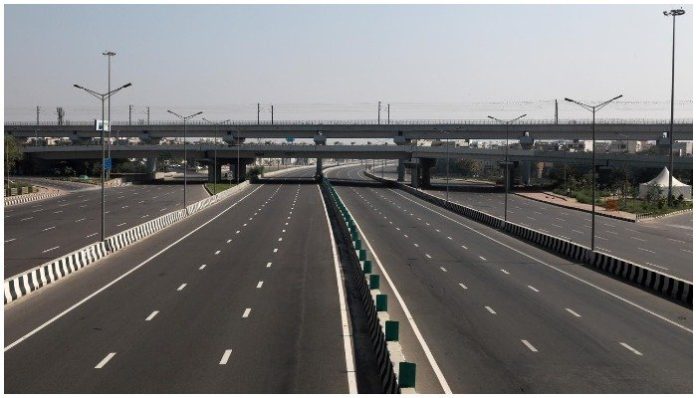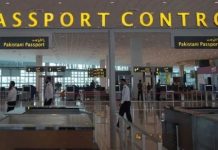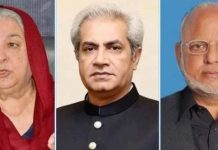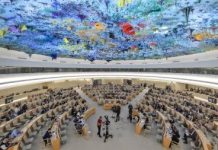An elevated expressway has been planned from the middle of the city of Lahore to ease the exit from the centre of the city, thus joining the Ravi toll plaza. This corridor is expected to be 10.7 km long.
The ever-expanding urbanisation of Lahore is not a new challenge for the authorities. Multiple strategies have been devised in the past to ease the traffic that remains the biggest issue of this provincial metropolis. The total land area of Lahore is 404 sq kilometres. This densely populated city has nearly 11 million people and consequently carries a huge load of vehicular traffic.
Lahore has always been a place of attraction, a favourite to live in because of better standards of living due to the availability of better facilities, hospitals, educational institutions, historic and cultural significance. This results in increased commuting within and outside the city and certainly calls for more transportation planning, entry and exit points and all related facilities to ensure a smooth flow of traffic.
Despite the construction of the motorway to reduce the travel distance between Lahore and Islamabad and other cities, commuters’ precious time was wasted just in crossing the entire Lahore to reach the toll plaza. The recently commissioned project of an ‘elevated expressway’ has now been seen as a solution to the problem and will tremendously reduce the travel time between the city centre and the toll plaza.
The elevated expressway will be an eight-lane dual carriageway that aims at the uninterrupted signal-free flow of traffic to facilitate commuters intending to travel towards major arteries and the motorway, M2. The total cost of the projects is Rs61 million, and the gestation period is 17 months.
The elevated expressway will start from Main Boulevard, Gulberg near McDonald’s and will follow the existing route of the Cantonment drain, thereby running parallel to Jail Road. An entry and an exit ramp from and to Zafar Ali Road are proposed. The proposed alignment will then cross Canal Road and traverse parallel to Jail Road near PICS and enter Shadman. It will then cross Ferozepur Road at Shama Chowk and will run on the recently constructed dual carriageway that acts as a link between Ferozepur Road and Multan Road. It will then turn towards Gulshan-e-Ravi and finally end at M2, where a trumpet interchange has been proposed near Ravi bridge approximately two kilometres from the Ravi Toll Plaza. In order to facilitate the commuters, entry and exit ramps have also been proposed on major arteries.
The conceptual idea in favour of the project carries the argument that it will have a positive effect on the environmental conditions and aesthetics of the city, and a reduction in traffic load on other roads of Lahore. It is believed it will save travel time and vehicle operating costs. The international ranking of the city will be improved. Once completed, the proposed expressway is expected to reduce an overall travel distance of around 82 kilometres between different localities and neighbourhoods linked via its signal-free corridor.
Despite the very conducive picture painted, there are some serious reservations that need to be considered with vigilance. The project identification process in our planning system is not well informed. For this reason, duplication or overlapping of projects in the city often takes place. This is what happened in this case too. The Orange Line project that was formulated way before that now runs parallel to the proposed elevated expressway. That would mitigate the effects of financial investment.
Another important issue is that the entire structure of the expressway is supposed to be built over the drain. The polluted water with a number of insoluble obnoxious and hazardous chemicals from liquid and solid waste can give way to harmful gases that can affect the cement structure. Additionally, drains need sunlight for the oxidation of the polluted water and as natural light shall be curtailed.
The project was initiated by the PML-N government and was agreed to be continued by the PTI government though a strong reaction was seen from the civil society. Now it is expected that the project shall be commissioned at full pace. Another criticism levelled against the project is that it is intended mainly for private car owners as only one or two people use a car for travelling, while a bus carries a minimum of 42 seated passengers and more than 20 others can stand in it. Encouraging bus services rather than building elevated expressways would have been a better idea, by many estimations.
There is always a trade-off between developing infrastructure and saving environmental conditions. The biggest problem in Pakistan is always that development projects are not demand-driven and are conceived for political significance.
The government is the custodian of precious public money. In no way should that be wasted on whimsical projects. A comprehensive planning policy is the inevitable need of the country. Otherwise, the debate shall remain infinite and the country will continue to see directionless investments and more loss to its economy.

















